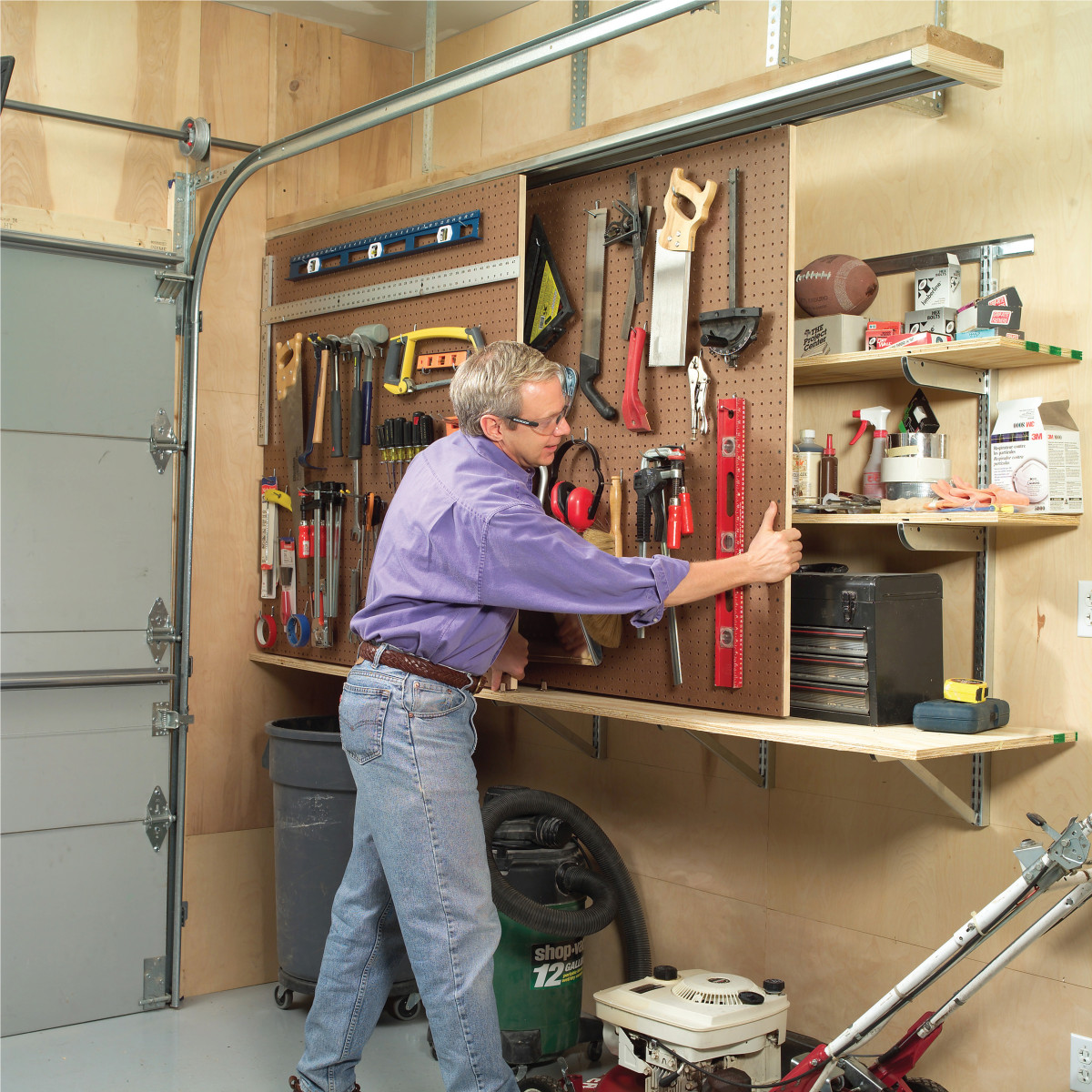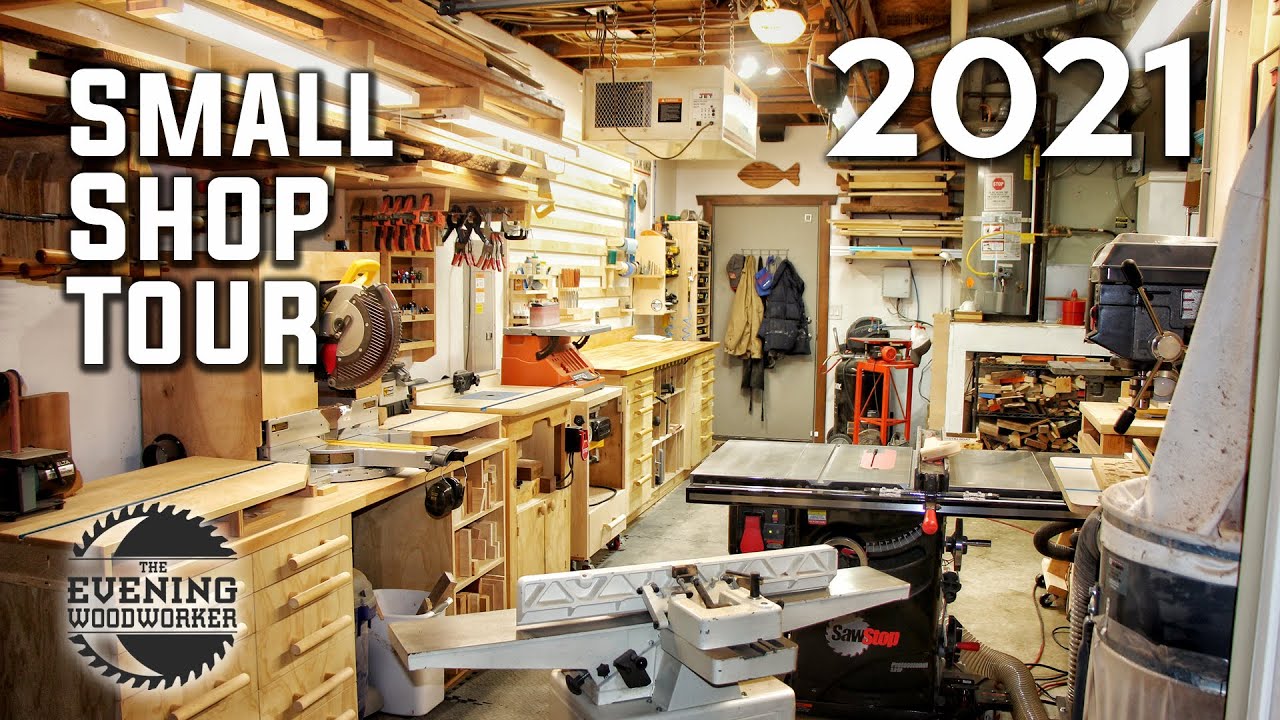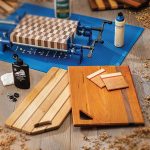When setting up a small woodworking shop, focus on space optimization and safety measures. Equip with essential tools and machinery for efficiency and productivity.
Creating a layout plan to maximize space and workflow is crucial. Proper lighting and ventilation are essential for a comfortable working environment. Implementing safety protocols and having a designated area for each woodworking process is key. Additionally, organizing materials and tools in a systematic manner will enhance productivity.
Consider investing in quality tools and equipment for long-term durability and precision. Regular maintenance and upkeep of machinery will ensure smooth operations. By following these steps, you can set up a functional and efficient woodworking shop tailored to your needs.
The Compact Workshop: A Brief Introduction
Embarking on the journey of setting up a small woodworking shop requires thoughtful planning and innovative strategies. Whether you’re an avid hobbyist or a professional woodworker, optimizing a compact workspace can greatly enhance efficiency and productivity. In this guide, we will explore the advantages of small woodworking shops, the benefits of a minimalist setup, and essential tips for maximizing space in your workshop.
Why Small Spaces?
The charm of a small woodworking shop lies in its ability to offer a cozy and efficient workspace. While larger workshops may seem appealing, smaller spaces promote organization, creativity, and cost-effectiveness. With the right layout and tools, a compact workshop can provide a conducive environment for crafting beautiful woodwork projects.
Benefits Of A Minimalist Setup
- Enhanced focus and concentration
- Reduced clutter and easy maintenance
- Maximized use of available space
- Lower overhead costs

Credit: www.pinterest.com
Initial Planning And Design
When setting up a small woodworking shop, careful planning and design are essential to create a functional and efficient space. This stage is crucial as it lays the foundation for the entire woodworking journey. In this article, we will discuss the initial steps of planning and designing your dream shop, starting with assessing your available space and sketching your ideal layout.
Assessing Your Space
Before diving into the design process, it’s important to assess the space you have available for your woodworking shop. Measure the dimensions of the area, taking note of any existing features such as windows, doors, or electrical outlets. This information will help you determine the layout and ensure that your machinery and workstations fit comfortably within the space.
Additionally, consider the practical aspects of the space. Is there sufficient lighting? Are there any structural or safety concerns that need to be addressed? By evaluating these factors early on, you can make any necessary adjustments or improvements to create a safe and functional working environment.
Sketching Your Dream Shop
Now that you have assessed your space, it’s time to start sketching your dream woodworking shop. Grab a pencil and paper or use a design software to create a rough layout of how you envision your shop to be. Keep in mind the workflow and organization of your tools and equipment for maximum efficiency.
Consider factors such as the placement of workbenches, tool storage, and dust collection systems. Think about the workflow from raw material storage to finished product assembly. Creating a well-organized and ergonomic layout will not only enhance your productivity but also contribute to a safer and more enjoyable woodworking experience.
Remember, your shop layout is not set in stone. It can be modified and improved as you gain more experience and identify areas that need adjustment. The initial sketch serves as a starting point and a visual guide to help you make informed decisions during the next steps of setting up your woodworking shop.
Essential Tools For The Small Shop
When setting up a small woodworking shop, having the right tools is essential for maximizing the available space and ensuring efficient workflow. Whether you’re a hobbyist or a professional, the right equipment can make a significant difference in the quality of your work and the ease of completing projects. In this section, we’ll explore the must-have tools and space-saving equipment for a small woodworking shop.
Must-have Tools
Equipping your small woodworking shop with the essential tools is crucial for executing projects effectively. Here are the must-have tools for a small shop:
- Table Saw: A versatile tool for making straight and angled cuts on various wood materials.
- Router: Ideal for shaping edges, creating joinery, and hollowing out areas in wood.
- Drill Press: Essential for accurately drilling holes at precise angles and depths.
- Random Orbital Sander: Perfect for smoothing wood surfaces and removing imperfections.
- Clamps: An assortment of clamps for securing wood pieces during assembly and glue-ups.
- Chisels and Mallet: Necessary for carving, shaping, and fine-tuning wood surfaces.
- Hand Planes: Used for flattening, smoothing, and shaping wood to precise dimensions.
Space-saving Equipment
In a small woodworking shop, utilizing space-saving equipment is vital to optimize the working area. Here are some space-saving equipment options:
- Folding Workbench: Provides a sturdy work surface that can be folded and stored when not in use.
- Compact Dust Collection System: Keeps the shop clean and free of sawdust without taking up too much space.
- Mobile Tool Cart: Allows for easy organization and transport of tools within the shop.
- Wall-Mounted Storage: Maximizes vertical space for storing small tools and supplies.
- Collapsible Sawhorses: Offers support for large workpieces and can be folded for storage.
Smart Storage Solutions
Efficient storage solutions are essential for a small woodworking shop to maximize space and keep tools organized. In this section, we will explore Vertical Storage Ideas and Hidden Storage Hacks that can help you optimize your workspace.
Vertical Storage Ideas
- Utilize vertical wall space with sturdy shelving units.
- Install pegboards to hang frequently used tools for easy access.
- Consider overhead storage racks for bulky items like lumber.
Hidden Storage Hacks
- Integrate storage compartments within workbenches for small tools.
- Utilize under-bench drawers to store hardware and supplies neatly.
- Convert unused corners into concealed storage cabinets for larger equipment.
Workbench Wisdom
When it comes to setting up a small woodworking shop, one of the most important considerations is the workbench. A sturdy and functional workbench is the heart of any woodworking space, providing a stable surface for various tasks and acting as a hub for tools and materials. In this section, we will explore the key aspects of workbench selection and DIY projects that can help you create the perfect workbench for your small woodworking shop.
Choosing The Right Workbench
When choosing a workbench for your small woodworking shop, there are several factors to consider. Here are some key points to keep in mind:
- Size: The size of your workbench should be determined by the available space in your shop and the types of projects you plan to undertake. Consider both the length and width of the workbench, ensuring it provides enough room for your materials and tools.
- Sturdiness: A solid and stable workbench is essential for woodworking tasks. Look for workbenches made from durable materials such as hardwood or heavy-duty steel. Pay attention to the construction and weight-bearing capacity to ensure it can withstand the demands of your projects.
- Workbench Height: The height of your workbench is crucial for maintaining good posture and reducing strain on your body. Ideally, the workbench should be at a comfortable height that allows you to work for extended periods without discomfort. Consider your own height and adjustability options when selecting a workbench.
- Storage and Organization: A well-designed workbench should offer storage solutions to keep your tools and supplies within reach. Look for workbenches with built-in cabinets, drawers, or shelves, allowing you to keep your workspace tidy and efficient.
Diy Workbench Projects
If you prefer a more personalized touch or have specific requirements for your workbench, DIY projects can be a great option. Here are a few DIY workbench ideas to inspire you:
- Basic Workbench: This simple yet functional workbench can be constructed using common materials like 2×4 lumber and plywood. With a few tools and some basic woodworking skills, you can create a versatile workbench that suits your needs.
- Folding Workbench: If space is at a premium in your small woodworking shop, a folding workbench can be a practical solution. This type of workbench can be easily folded up and stored when not in use, maximizing the available space in your shop.
- Mobile Workbench: A mobile workbench with wheels allows you to move your workspace around as needed. This is particularly useful if you have limited space or if you frequently work on larger projects that require repositioning.
By embarking on a DIY workbench project, you not only save money but also have the opportunity to customize the design and features according to your specific needs.
Maximizing Mobility Inside The Shop
Maximizing mobility is crucial in a small woodworking shop. It is important to plan the layout carefully to optimize the use of space and ensure easy movement. This will increase efficiency and productivity while minimizing the risk of accidents.
Maximizing Mobility Inside the Shop is crucial for any woodworking shop, especially if it is small. With limited space, it’s important to have a flexible workspace that can be easily adapted to suit the project at hand. In this blog post, we will explore two ways to maximize mobility inside a small woodworking shop: Mobile Bases for Tools and Flexible Work Areas.Mobile Bases For Tools
One of the easiest ways to increase mobility inside a woodworking shop is to use mobile bases for tools. This allows tools to be easily moved around the shop as needed, making it easier to work on larger projects. For example, a table saw can be mounted on a mobile base, which can be moved to the center of the shop when working on larger pieces, and then moved back to its original position when not in use. This not only saves space but also makes it easier to work on projects that require larger tools.Flexible Work Areas
Another way to increase mobility inside a small woodworking shop is to create flexible work areas. This can be accomplished by using work surfaces that can be easily moved or reconfigured depending on the project at hand. For example, a workbench that can be folded up and stored against a wall when not in use can free up valuable floor space. Similarly, using sawhorses and adjustable height work tables can allow for a variety of work surfaces that can be easily reconfigured to suit the project at hand. In conclusion, by utilizing Mobile Bases for Tools and Flexible Work Areas, you can maximize mobility inside a small woodworking shop. This will not only save space but also make it easier to work on larger projects.Dust Management In Confined Spaces
Dust management in confined spaces is a critical consideration for small woodworking shops. The compact nature of these spaces requires efficient solutions to maintain clean air and a safe working environment.
Compact Dust Collection Systems
When dealing with limited space, compact dust collection systems are essential for effectively managing dust and debris. These systems are designed to fit into small workshops without compromising on performance. Utilizing a compact dust collection system not only helps in maintaining a clutter-free environment but also prevents the accumulation of harmful dust particles.
Maintaining Clean Air
In a small woodworking shop, maintaining clean air is vital for the health and well-being of the woodworkers. Implementing effective dust management strategies such as regular cleaning, proper ventilation, and the use of air filtration systems can significantly reduce airborne particles, ensuring a healthier work environment.

Credit: m.youtube.com
Inspiring Small Shop Layouts
When it comes to setting up a small woodworking shop, creating an inspiring layout is essential for maximizing space and efficiency. The right layout can make a small shop feel spacious and well-organized, providing the perfect environment for woodworking projects.
Real-life Examples
Real-life examples offer valuable insights into how small woodworking shops can be efficiently laid out. By studying these examples, woodworkers can gain practical ideas and inspiration for optimizing their own shop layouts.
Layout Plans To Consider
Considering the right layout plans is crucial for a small woodworking shop. From compact workstations to smart storage solutions, there are various layout plans to consider that can enhance functionality and workflow in a limited space.

Credit: www.popularwoodworking.com
Frequently Asked Questions
How To Layout A Small Wood Shop?
To layout a small wood shop, consider the following tips: 1. Plan the layout based on workflow efficiency and safety. 2. Allocate separate areas for cutting, assembly, and storage. 3. Utilize vertical space with wall-mounted storage and shelving. 4. Keep essential tools within easy reach.
5. Ensure proper lighting and ventilation.
What Is A Good Size For A Hobby Woodworking Shop?
A good size for a hobby woodworking shop is around 400-600 square feet, allowing space for tools and projects.
How Much Does It Cost To Start A Woodworking Shop?
The cost to start a woodworking shop can vary, but it typically ranges from $10,000 to $50,000. This includes equipment, tools, and initial materials. Renting or purchasing a workspace will also contribute to the overall cost.
What Is A Good Workshop Layout?
A good workshop layout should prioritize efficiency and organization. It should have designated areas for different tasks, ample storage for tools and materials, and clear pathways for movement. Additionally, it should have proper lighting, ventilation, and safety measures in place.
Conclusion
Establishing a small woodworking shop requires meticulous planning and thoughtful organization. By considering space, tools, and safety measures, one can create an efficient and functional workspace. Embrace creativity and passion in pursuing woodworking projects, and continuously refine your shop layout for optimal productivity and enjoyment.



